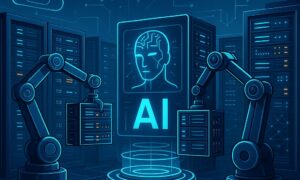The Internet of Things has been transforming various industries, and as we approach a new year, IoT in 2024 promising impact is becoming even more profound. In this blog post, we will explore how IoT is set to reshape healthcare, manufacturing, and several other sectors in the coming years.
IoT in Healthcare
Remote Patient Monitoring: IoT devices and sensors are enabling healthcare providers to monitor patients’ health remotely. Wearable devices, such as smartwatches, can track vital signs, like heart rate and blood pressure, and send data to healthcare professionals in real-time. This not only improves patient care but also reduces the need for frequent in-person visits.
Predictive Healthcare: IoT helps in predicting disease outbreaks and patient-specific health issues. By analyzing large sets of health data, it can identify trends and patterns, allowing healthcare providers to take preventive measures and tailor treatments to individual patients.
Smart Hospitals: IoT is making healthcare facilities smarter and more efficient. Hospitals are using IoT to manage assets, control energy consumption, and enhance the overall patient experience. For example, smart beds can adjust themselves for patient comfort, and RFID tags help in locating equipment quickly.
Pharmaceutical Supply Chain: IoT ensures the integrity of pharmaceuticals during transportation. Temperature and humidity sensors monitor the conditions in which drugs are stored and transported, reducing the risk of spoilage and ensuring drug efficacy.
Telemedicine: The integration of IoT in healthcare has facilitated the rapid growth of telemedicine. Patients can now connect with healthcare providers through video calls and share vital signs and symptoms using IoT-enabled devices. This technology has been a game-changer, especially during the COVID-19 pandemic.
Personalized Medicine: IoT-driven data analysis is helping physicians create highly personalized treatment plans. It takes into account individual genetics, lifestyle, and real-time health data to optimize therapeutic outcomes.
Data Security: With the increasing use of IoT in healthcare, data security has become a significant concern. Protecting sensitive patient information and ensuring compliance with privacy regulations is crucial.
IoT in Manufacturing
Predictive Maintenance: In manufacturing, IoT is transforming how machinery is maintained. Sensors attached to equipment collect data and predict when maintenance is needed. This reduces downtime and operational costs while increasing efficiency.
Quality Control: IoT sensors can monitor the quality of products throughout the manufacturing process. If a defect is detected, the system can stop production or notify the operator for immediate action, ensuring that only high-quality products reach consumers.
Supply Chain Management: IoT helps manufacturers track the movement of goods through the supply chain. Real-time data on product location, temperature, and humidity ensures that goods arrive in optimal condition and allows for better inventory management.
Energy Efficiency: Manufacturers are using IoT to optimize energy consumption. Smart grids and sensors are implemented to reduce energy waste and lower operational costs.
Smart Factories: The concept of smart factories or Industry 4.0 is becoming a reality with IoT. Automated systems communicate with each other to manage production, making factories more efficient and responsive to changes in demand.
Human-Machine Collaboration: IoT is enhancing the collaboration between humans and machines. With the help of wearable devices and augmented reality tools, workers can access real-time information and receive guidance to perform tasks more effectively.
Environmental Sustainability: Internet of Things is helping manufacturers reduce their environmental footprint. By monitoring resource consumption and emissions, companies can implement eco-friendly practices and reduce waste.
IoT in Other Sectors
Agriculture: IoT is playing a crucial role in modernizing agriculture. Smart farming involves the use of sensors, drones, and data analytics to monitor crop health, soil conditions, and weather patterns. This data helps farmers make informed decisions, increasing yield and sustainability.
Smart Cities: Cities are using IoT to become smarter and more efficient. Smart traffic management, waste collection, and energy consumption are just a few examples. IoT technologies are helping cities reduce congestion, lower energy costs, and enhance the quality of life for residents.
Retail: IoT is revolutionizing the retail industry. Smart shelves, RFID tags, and beacons help retailers monitor inventory, improve customer experiences, and provide personalized promotions.
Challenges and Concerns
While Internet of Things holds great promise, it also raises concerns about data security and privacy. With the vast amount of data generated, protecting sensitive information is paramount. Additionally, interoperability between different IoT devices and systems can be a challenge. Standardization is essential for ensuring that these technologies work seamlessly together.
Conclusion
As we approach 2024, the Internet of Things is poised to have a profound impact on various industries, including healthcare, manufacturing, agriculture, smart cities, and retail. The ability to collect and analyze data in real-time is revolutionizing the way businesses and organizations operate, making them more efficient, sustainable, and customer-centric. While there are challenges and concerns to address, the potential benefits of Internet of Things are immense. The continued development and adoption of IoT technologies will undoubtedly shape the future of these industries and many more, making them more connected, efficient, and innovative than ever before. It’s an exciting time for the IoT, and the possibilities are boundless.



































